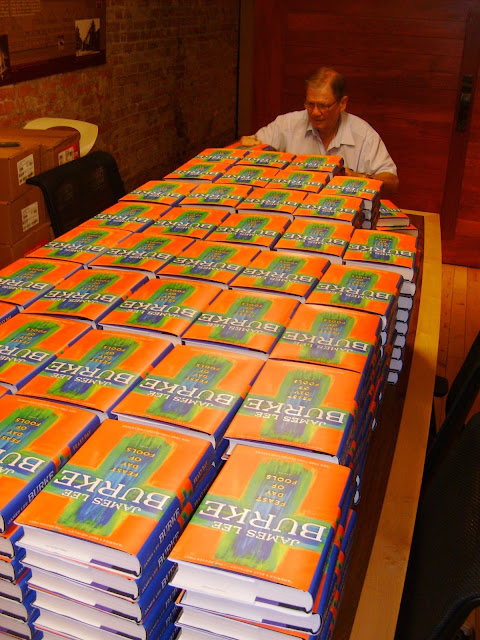One of the particular pleasures of writing about Jane Austen is...the travel! Oh, the travel! After her father's retirement and death, Jane moved with depressing regularity in her twenties and thirties--several lodgings in Bath alone, followed by Southampton and eventually Chawton--and she made frequent side trips to visit relatives in Staffordshire (Edward Cooper and his family at Hamstall-Ridware), Kent (brother Edward at Godmersham), and Warwickshire (a flying visit with strange bedfellows to Stoneleigh Abbey). She often stayed with her brother Henry in his various London homes, and enjoyed summer visits to towns along the Channel Coast, such as Lyme Regis. Scholars dispute whether she ever got as far north as Derbyshire--she mentions the town of Bakewell in
Pride & Prejudice--but I for one believe that she did.
And having elected, sometime in the closing years of the last century, to write about Jane myself--I had little choice but to follow where she led. I have traipsed around the English countryside in the grip of obsession, hunting for the obvious and the obscure among the Monuments to Jane. I've lost myself in hedgerows searching for Edward Cooper's parsonage, slept in a canopied bed in a Palladian villa outside of Bath, and traced the remnants of a Humphrey Repton garden; but some of my loveliest memories are of Godmersham Park, Edward Austen Knight's estate about eight miles outside Canterbury, in Kent. And I never even looked inside the house.
 |
| Godmersham in Jane and Edward's day |
Edward, as most Janeites know, was considered the most fortunate of the six Austen sons, because he was adopted at the age of twelve by Thomas Knight, a childless but wealthy cousin. Edward inherited Godmersham in Kent, along with Chawton Great House in Hampshire and some other landholdings; he was occasionally plagued with lawsuits disputing his right to inherit Thomas Knight's property, and he was required to take the Knight name--but in general, he settled with apparent happiness and few regrets into the life of a country gentleman.
 |
| The Front Hall at Godmersham |
His eleven children grew up in affluence, with public school educations and good hunting for the boys; the girls suffered a parade of governesses--Jane befriended some of these, like Anne Sharpe, and passed over others, like the Miss Clewes who figures in
Canterbury Tale. The Austen-Knights entertained everybody, and were entertained in return, in their neighborhood in Kent: the Wildmans at Chilham Castle, the Finch-Hattons at Eastwell Park, and their various Bridges cousins. Godmersham was a large and handsome house, set into a fold of the hills, with the River Stour running between it and the road; from Jane's letters, written in October and November of 1813, it seems like a house constantly full of people. The local MP and Master of Hounds, Mr. Lushington, arrives to dine and spend the night; Young Edward's friends drop in and out of the guest bedrooms prior to his departure for Oxford; the Moores arrive for a week and install their son in the nursery. Jane herself spends two months at Godmersham that autumn, and is able to collect considerable material for the book she is thinking of writing--a book called
Emma. She revels in the comfort and society of the place, the opportunity for stimulation, and her drives into the walled cathedral town of Canterbury. On one of those junkets, Edward--who is First Magistrate--takes her through the Canterbury Gaol at Westgate.
Years later, I walked through Canterbury myself, looking for the old gaol. I bought some Regency fashion plates--I collect them--at a small bookseller's in one of the town's winding streets, then caught a bus that dropped me without ceremony at the end of Godmersham Park's long drive.
 |
| Sheep on the Godmersham Downs |
At the time, the house was a corporate headquarters. I was free to walk up the driveway, however, and traverse the grounds--all of which look remarkably as they must have done in Jane's day--because Godmersham sits on the ancient Pilgrim's Way, the footpath between London and Canterbury Cathedral. The Pilgrim's Way is open to hikers, as are all public footpaths in England, regardless of whose property they cross. For a while that sunny July morning I was able to pretend I was one of Chaucer's merry band of fellow-travellers, telling stories to pass the time. And I could imagine Jane, spinning tales of her own, as she walked the high hills of Edward's estate, dotted with specimen trees and sheep. I went on to set two books at Godmersham:
Jane and the Genius of the Place, which occurs during the summer of 1805, known as the Great Terror, when Kent was braced for Napoleon's expected invasion; and now the eleventh Austen mystery,
Jane and the Canterbury Tale. This story revisits the Austen-Knights eight years later, in 1813--when Elizabeth Austen is long since dead, her children growing up, and her husband Edward still mourning her. It is very much a family story, about love and loss, and the endurance of such things through time. It is also, by design, a story of fellow-travelers, and the adventurous tales they weave about the past, rather as Chaucer's Pilgrims did in that
otherCanterbury Tale.

It is possible this is the last Jane Austen mystery I will write. I don't regret leaving my Jane here, where I first felt I truly found her--hurrying with her pen and small, handsewn book of paper toward the little temple set on a hill, to gaze out over Edward's paradise, and dream her particular dreams. I hope you find your own Jane Austen in this Canterbury Tale, too.
Fondly,Stephanie























